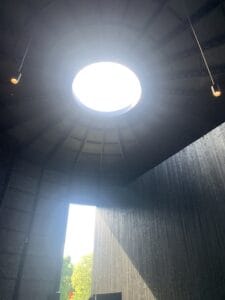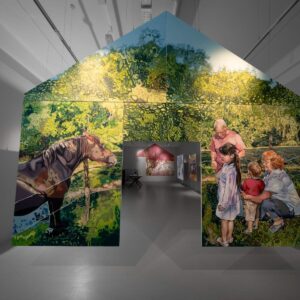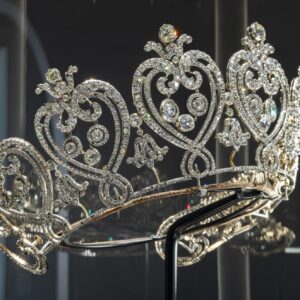Max Rumbol’s new solo exhibition Restless has opened at Ramp Gallery. Restless references both the overarching nocturnal atmosphere of the work as well as the notion that these works never explicitly settle within abstraction or figuration, but the approach instead moves freely between the two. Whereas with previous works the compositions resulted from narrative, in this body the recurring motifs themselves are reexamined and woven in a more abstract manner to create an open-ended image. As a result, whilst the works tend to vibrate at the same frequency, a clear linear narrative is absent through the show.

119 × 92 cm
At their heart, all the works explore the tension between both a variety of modes of image-making and mark making. We often inherently value artwork as a result of the fact that it is a direct trace of the artists hand; by creating works that rely heavily on computer machining, I look to create a dialogue between machine and hand. The process is somewhat cyclical – taking direct indexical marks translated through a trackpad, allowing the computer to transform them, and finally bringing them back into the physical dimension with immense accuracy via a laser cutter. By manually working these manufactured sculptural surfaces in different ways to reveal or hide the trace of the hand, questions are raised around where the artist’s hand lies or what their role is.

With these works, I really wanted to push this dialogue between the digital hand (absent touch) and physical hand (present touch), through use of a wide range of materials, as well as referencing the artist’s hands in the first person. Not only is the hand literally alluded to but there is also a dialogue between different types of mark-making and the role the hand plays in them, while the inclusion of collaged elements of reality helps to interrogate the illusionistic tradition of painting. Aside from this tension between the digital hand and the physical hand, there’s also a dialogue between the natural and manufactured, with a lot of the works using the wood’s natural grain as their ground. In doing so the objects once again become more difficult to decode, and seemingly harder to place.
The works borrow a number of references from the Surrealists, with ‘Imp’ being a reinterpretation of René Magritte’s 1927 painting Imp of the Perverse. The title references Edgar Allan Poe’s short story of the same name, which reflects on the human impulse to act in a self-destructive manner. In this work, the abstracted shape is borrowed and reinterpreted as an apple tree, a reference to Isaac Newton’s epiphany. As a whole, the work embodies the approach of the show, a reinventing of the artists’ oeuvre driven by an impulse to think about these largely figurative compositions in a more abstract manner.

One of the other themes throughout the show is the inclusion of elements that reference sketching or drawing within larger works, to draw attention to the role of drawing in the creation of the works. For me, drawing is a method of thinking out loud that provides a springboard for the finished works, so referencing them within the finished works further communicates the cyclical nature of the process. Drawings also tend to capture the artist at peak intensity, and they have a spontaneity that can be perceived as a polar opposite to the highly planned nature of my paintings. Again, this freedom and energy was something I wanted to leverage to explore the dialogue between experimentation and excitement and the highly machined and methodical approach to the painting as a whole. In many ways, these works sit somewhere between subconscious and consciousness – reflecting on the tension between the deliberate and the instinctive, the machined and the manual, the finished and the unfinished.
Ramp Gallery 81 Stoke Newington Road – September 18th, 2021 ramp-gallery.com







